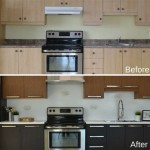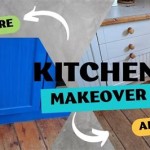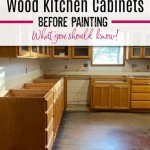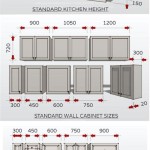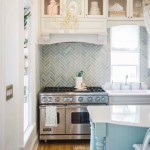1970s Kitchen Cabinets: A Retrospective
The 1970s marked a distinct era in kitchen design, and cabinetry played a pivotal role in defining the decade's aesthetic. This period witnessed a departure from the sleek minimalism of the previous decade, embracing bolder colors, natural materials, and a focus on functionality tailored to the evolving needs of families.
Key Characteristics of 1970s Kitchen Cabinets
Several key features distinguish 1970s kitchen cabinets:
- Earth Tones: Dominant colors included avocado green, harvest gold, burnt orange, and earthy browns.
- Natural Wood: Oak, pine, and maple were frequently used, often showcasing prominent wood grain.
- Recessed Panel Doors: This style, featuring a raised frame around a recessed center panel, was a popular choice.
- Hardware: Dark, ornate metal hardware, such as brass or wrought iron pulls and knobs, complemented the cabinetry.
Materials Commonly Used
While solid wood was a prevalent choice, the 1970s also saw the rise of more affordable alternatives:
- Solid Wood: Oak, pine, and maple were favored for their durability and natural beauty.
- Wood Veneer: A thin layer of wood applied to a less expensive substrate like particleboard offered a cost-effective option with the appearance of solid wood.
- Laminate: Durable and easy to clean, laminate provided a practical surface for countertop and cabinet applications, often featuring patterns mimicking wood grain or solid colors.
Popular Styles and Designs
The 1970s embraced a variety of cabinet styles, reflecting the era's eclectic design influences:
- Mediterranean: Darker wood tones and ornate detailing contributed to a Mediterranean feel.
- Colonial: Traditional raised panel doors in painted finishes, often white or cream, offered a classic look.
- Contemporary: Flat-panel or slab doors, typically in laminate finishes, presented a more streamlined, modern aesthetic.
Distinctive Hardware and Accents
Hardware played a crucial role in completing the 1970s kitchen look:
- Dark Metal: Brass, bronze, and wrought iron were common choices, often featuring intricate designs.
- Large Knobs and Pulls: Oversized hardware made a statement and added to the decade's bold aesthetic.
- Decorative Hinges: Exposed hinges, often in matching metal finishes, served as a decorative element.
Functionality and Layout
The 1970s saw a shift towards kitchens designed for both functionality and entertaining:
- Open Floor Plans: Kitchens began to open up to adjacent dining and living areas, creating a more social space.
- Built-in Appliances: Dishwashers, ovens, and microwaves were increasingly integrated into the cabinetry, creating a seamless look.
- Island Countertops: Islands provided additional workspace and served as a gathering spot.
Renovating or Restoring 1970s Cabinets
Homeowners with original 1970s cabinets have several options:
- Restoration: Carefully cleaning, repairing, and refinishing existing cabinets can preserve their original charm.
- Refacing: Replacing cabinet doors and drawer fronts while retaining the existing cabinet boxes offers a cost-effective update.
- Replacement: Opting for entirely new cabinets allows for a complete modernization of the kitchen.
The Legacy of 1970s Kitchen Design
While some elements of 1970s kitchen design might be considered dated today, the era's emphasis on natural materials, functionality, and open layouts continues to influence contemporary kitchen design. The resurgence of interest in vintage and retro aesthetics has also led to a renewed appreciation for the unique charm of 1970s cabinetry.
Identifying Authentic 1970s Cabinets
Several clues can help identify genuine 1970s cabinets:
- Construction: Examine the joinery and materials. Solid wood or wood veneer construction is typical of the era.
- Hardware: Look for dark metal hardware with ornate detailing.
- Finish: The presence of original earth-toned finishes, often with a slightly worn patina, suggests authenticity.
Appraising the Value of 1970s Cabinets
Several factors influence the value of original 1970s cabinets:
- Material: Solid wood cabinets generally hold more value than those made with veneer or laminate.
- Condition: Cabinets in good condition with minimal wear and tear are more desirable.
- Rarity: Unique or unusual designs and finishes can command higher prices.

Kitchen Makeover Plans Bye 1970 S 1970s Remodel Budget Small

Need Ideas For 1970 S Oak Kitchen Cabinet Update

Before After A Fresh And Functional 1970s Kitchen Remodel Ckd Remodeling

1970 Kitchen Renovation Waypoint Cabinets Customizations Miss Mustard Seed

How To Modernize Your Vintage Kitchen

70 S Ranch Kitchen Makeover And How To Install Door Hardware Sawdust 2 Stitches

1970s Kitchen Makeover By Junk Love Boutique Hometalk

Budget Friendly Kitchen Makeover Ideas To Update Your

1970s Kitchen Makeover By Junk Love Boutique Remodel Layout Cabinets Simple

How To Pretend The 70 S Never Happened By Painting Your Kitchen Cabinets Domestiphobia
Related Posts

